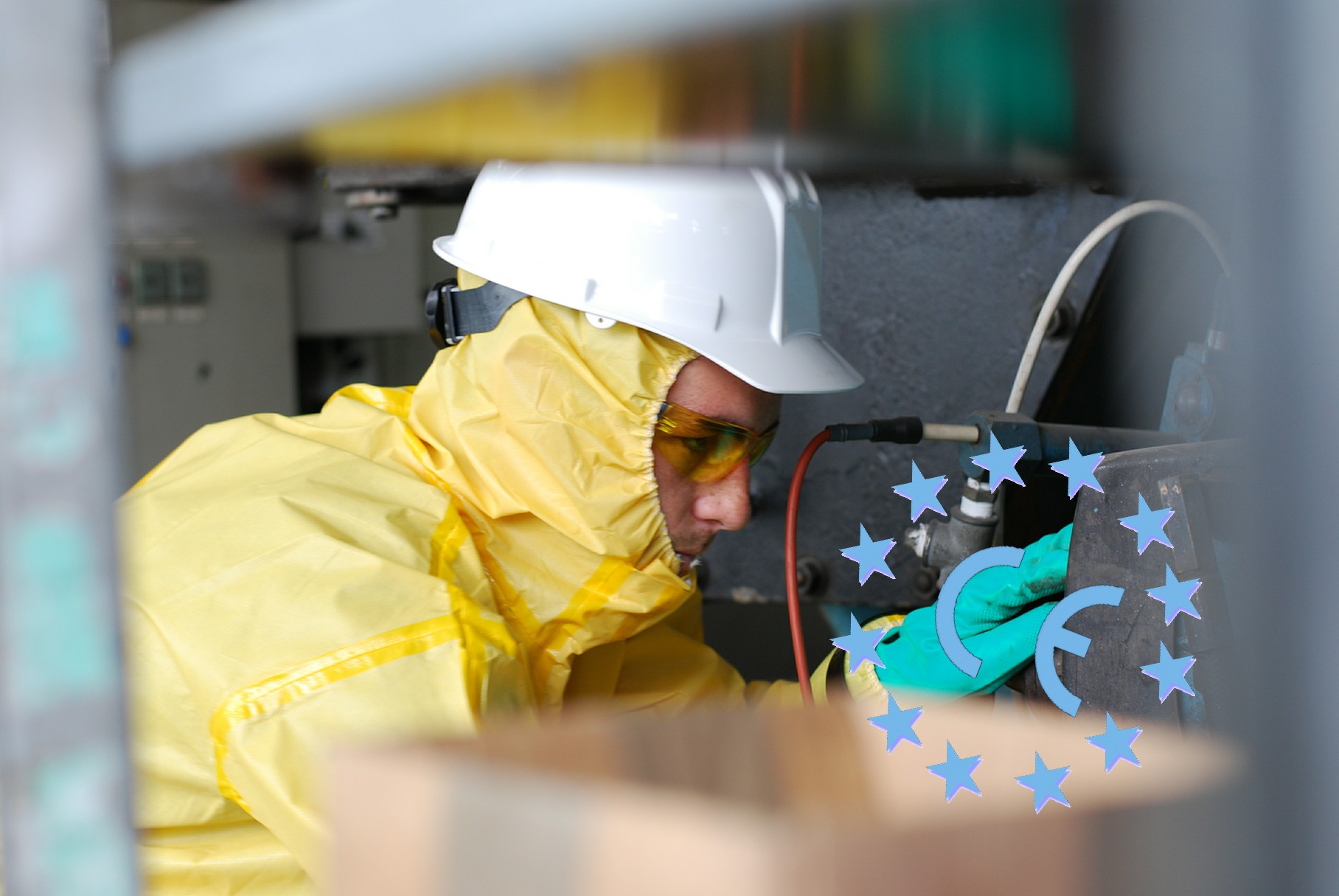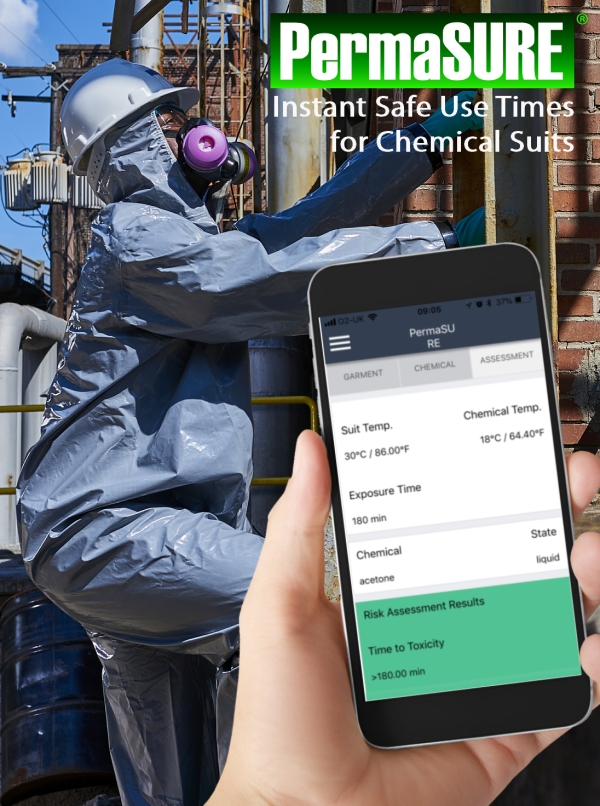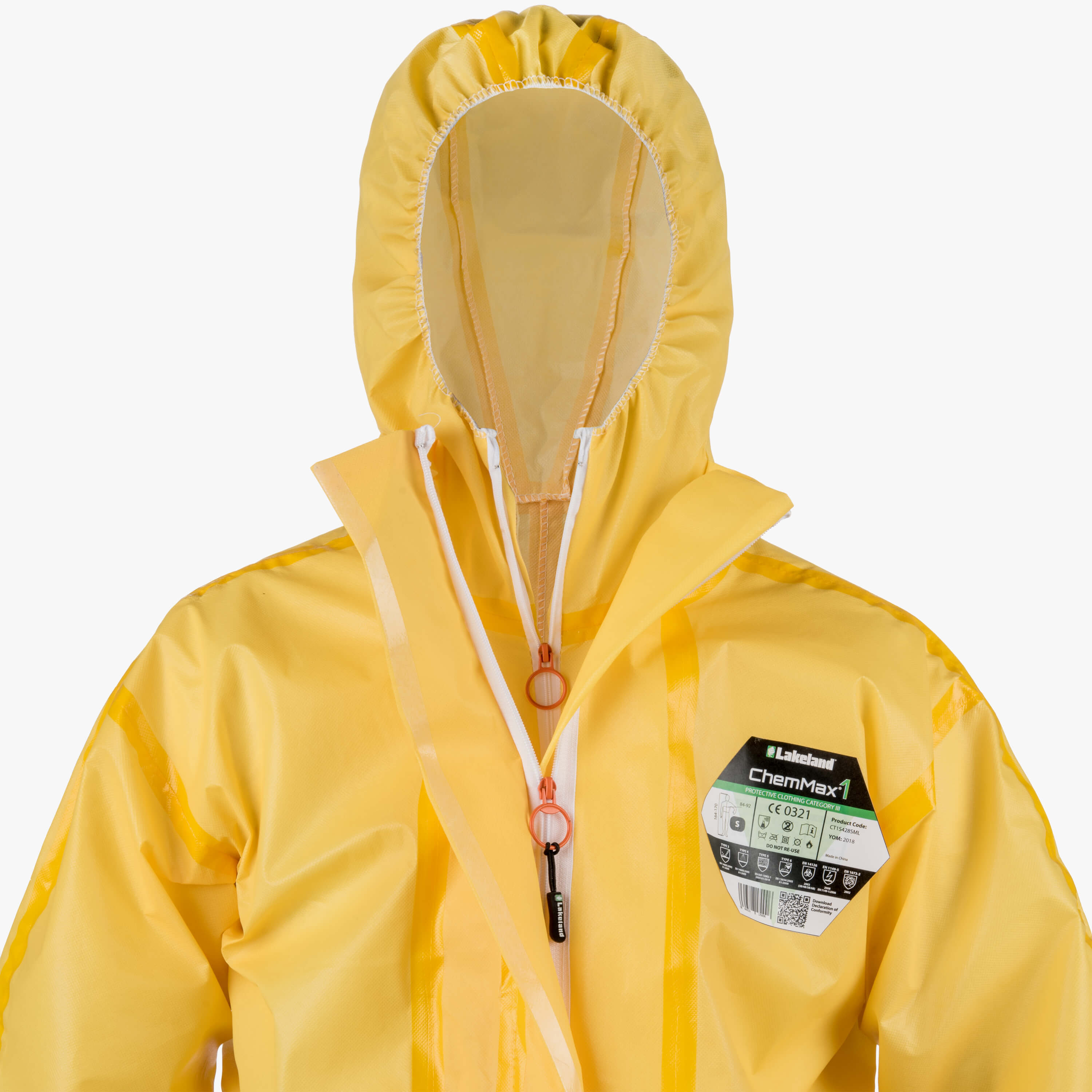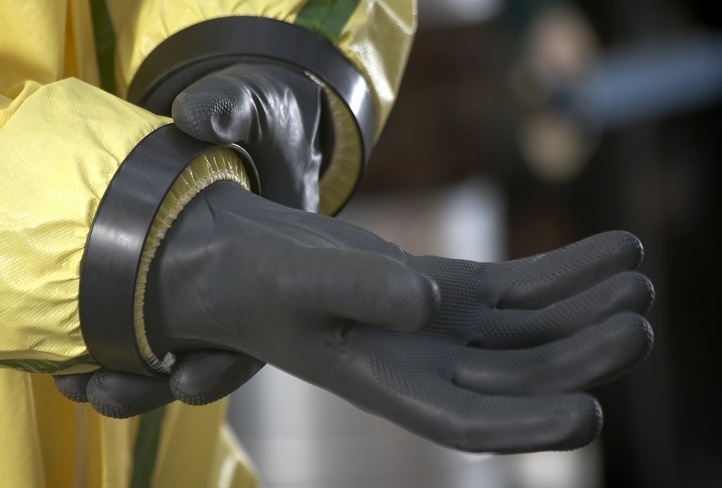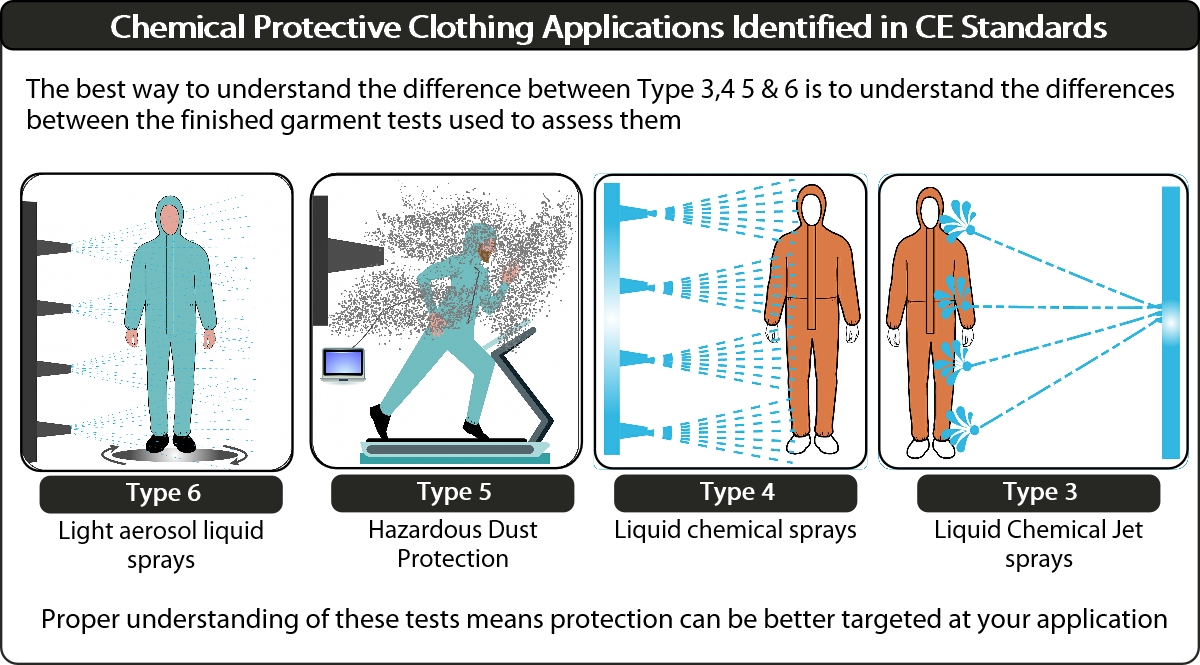With the growing complexity of PPE standards and an increasingly global outlook for businesses, the challenge of considering both European EN safety clothing Types and US OSHA protection levels, combined with the recent proliferation of brands, selecting the right chemical protective clothing has become quite a challenge.
And it’s not just protection that matters. Comfort is important and is a safety issue; the best PPE in the world can be undermined by a suit that is too uncomfortable.
So, to streamline the process it can be useful to have a list of starting points. Those key “must-haves” for your chemical suit. The deal-breakers. The features that sort out the suits that you will consider further and trial from those that you can dismiss outright. This blog outlines eight key features you should look for in your chemical suit.
Understanding the Protection: How Might a Chemical Breach the Defenses of Your Hazmat Suit?
Whether protecting against liquid, dust or gas, there are only 2 ways that a chemical can get inside your suit. Via permeation through the fabric, or penetration through holes or gaps in the PPE ensemble.
These two different routes of contamination define the first key features and performance requirements you need to look for.
|
The Most Likely route of Contamination? Its worth remembering that if you are splashed or sprayed with a chemical the greatest risk of contamination comes not from permeation but from penetration through poor suit construction or through gaps between the suit and other PPE. |
These features can be considered under three headings: –
- Permeation Resistance of the fabric and correctly calculated safe-wear times.
- The construction of the suit and how it resists penetration.
- How effectively the suit works together with other PPE to minimize penetration.
1. Permeation Resistance of the fabric and correctly calculated safe-wear times
Hidden, Killer Chemicals: ensure the safe wear time of your hazmat suit is longer than the duration of the application.
Chemicals present a different challenge to most hazards: –
Permeation resistance is measured against specific chemicals using a “permeation resistance test” (EN 6529 in Europe and ASTM F793 in North America). However, whilst useful for comparison, these tests do not account for the effect of temperature (higher temperature results in faster and more permeation), and the “breakthrough” they provide is not, as is commonly misinterpreted, an indication of safe wear time.
How long you can safely wear a chemical suit must be based on: –
- Understanding the volume of chemical that will permeate over time.
- Comparison of that volume permeated with the chemical’s toxicity level (i.e. how much of it might cause harm). You can discover the techniques to calculate Safe Wear Times here.
Tools such as “Permasure” – a free app used to calculate safe-wear times for Lakeland ChemMax 3, ChemMax 4Plus and Interceptor Plus can be useful in making this calculation easy to perform and includes data on over 4000 chemicals.
Key Feature 1

Understand how to properly assess how long you can safely wear the suit. Consider use of tools such as Permasure. You can find out more about what you can do with Permasure here.
The Construction of the Chemical Suit and How it Resists Penetration
Where are the potential weaknesses and how are they dealt with in suit construction?
Regardless of the effectiveness of fabric permeation resistance, the greater risk is penetration, and there are two areas of specific weakness in the suit itself; the seams and the front fastening.
THE SEAMS OF YOUR HAZMAT SUIT
Commonly used serged or stitched seams are fine for less hazardous chemicals and garments intended for EN Type 5 and 6 applications or for OSHA level D protection. However, any stitched seam (and this includes bound seams) has multiple holes in it through which a chemical may penetrate.

Thus, for any more hazardous chemical, sealed seams are the safe choice. You can read more about the importance of seam construction in our blog here.
THE FRONT FASTENING OF YOUR HAZMAT SUIT
Normally, chemical suits fasten at the front with standard, low-cost zippers. However, these are a distinct weak point at the most critical area of the garment. Generally constructed with woven backing tape and gaps between zip teeth that are relatively large, they present an easy route for penetration.
For a secure chemical suit, the zip fastening must be protected. This is normally achieved with a sealable zip flap of various designs. In some cases, a single flap with adhesive tape is used, though given the challenge of sealing down the tape without creases or folds, and the possibility of the tape coming loose, this is not ensuring as good protection as it could be. Better garments feature more creative double storm flaps and/or double zips.
Lakeland ChemMax garments include a unique double zip and storm flap designed to ensure security at the front fastening.
Key Feature 2

Stitched seams and a basic, single flap design may not be good enough and may allow penetration.
How Effectively the Suit Works Together with Other PPE to Minimize Penetration
The PPE Ensemble: How effectively does your hazmat suit work with other PPE?
If the construction of the garment effectively prevents penetration, the next consideration is to minimize the risk of penetration through gaps between the chemical suit and other PPE worn; the face mask, the gloves and the boots. There are two key questions to ask: –
- Is the garment design conducive to an effective seal with the other PPE?
- Do you need to consider additional action to ensure a seal at the joins?
Garment Design
The single-use nature of many chemical suits means the pressure to minimize spend is probably stronger than with other PPE, so many manufacturers favor simple garment designs that reduces fabric usage and labor. This often results in garments that are low cost, but also poorly sized, poorly fitting, and work ineffectively with other PPE.
By contrast, a well-developed, ergonomically constructed garment will: –
- Fit the wearer and be more comfortable.
- Allow greater freedom of movement (also enhancing comfort), thus improving the chance of maintaining protection for the duration of the task (a low-cost garment that tears quickly in use will not only fail to protect but is will also probably cost more overall because the wearer will use more garments!).
- Help ensure connections with other PPE are effective to reduce the possibility of penetration.
For example: –
- Some suits feature a hood consisting of two side pieces and a single seam. A two-piece hood is commonly manifest in the “Noddy” hood – where the top of the hood sticks up comically. Worse than the doubtful aesthetics however, is that such hoods often do not fit the 3-D shape of the head well, tend to restrict movement and visibility, and often fail to effectively connect with the rim of a face mask.
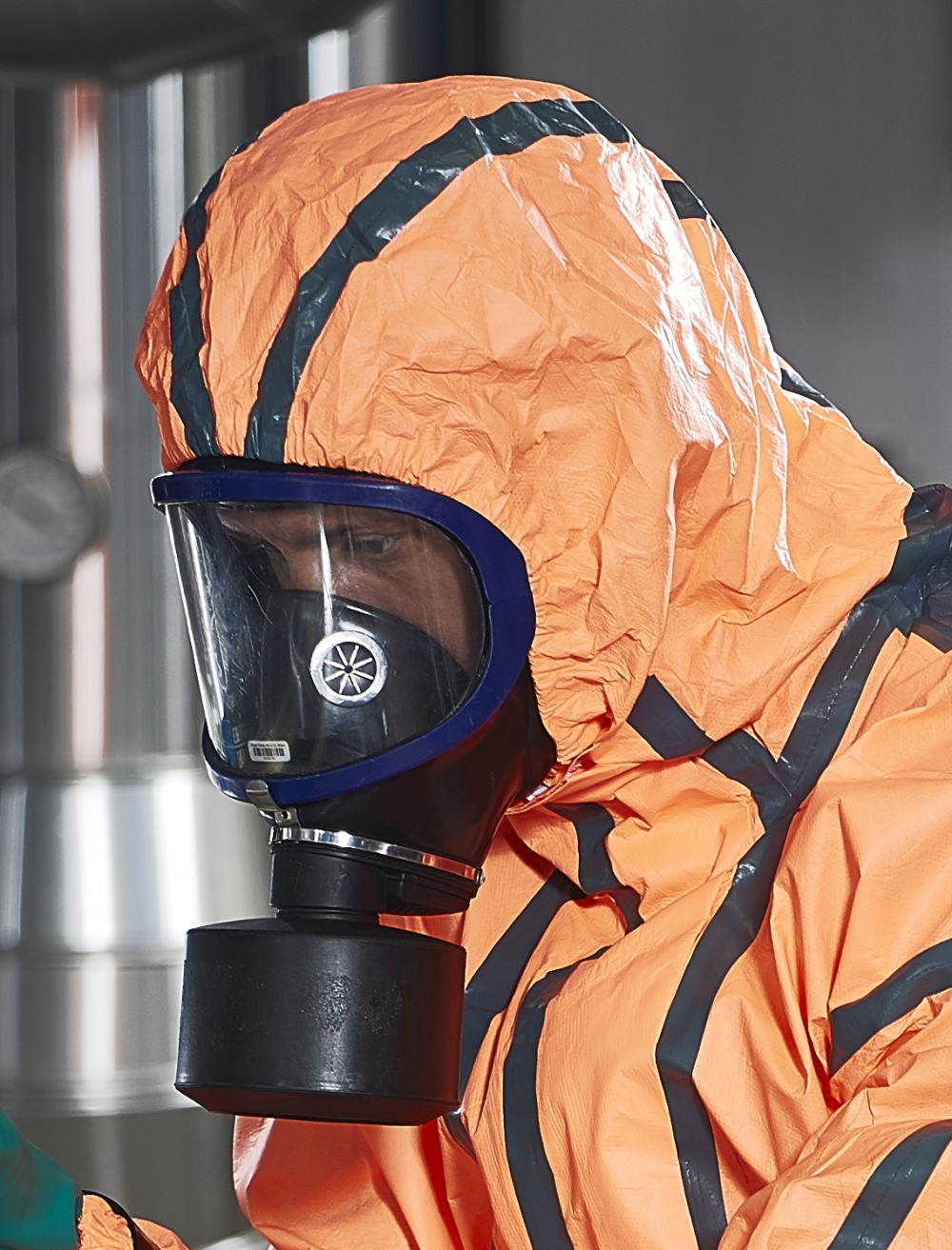
- For two reasons, the weakest point of any garment is the crotch. First, it suffers the most stress (especially where the application requires crouching or climbing), and second, in cheaper garments it is where four seams (two body and two leg) meet at a single point.
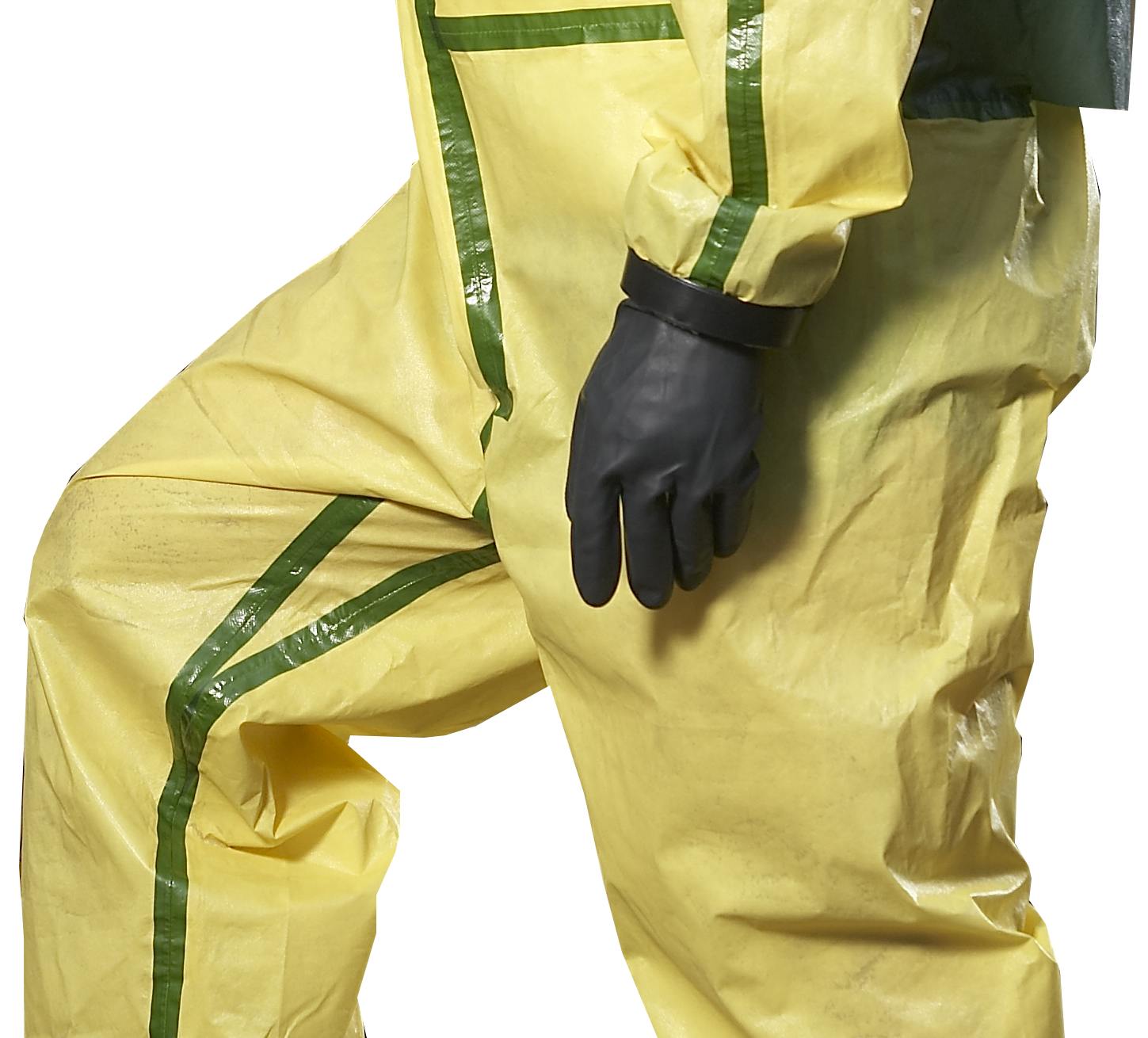
These are just two examples of how effective garment design can improve comfort, help maintain protection for the duration of the application, and most importantly, help minimize the risk of penetration between the suit and the other PPE.
Key Feature 3

Fully sealed seams ensure no penetration through stitch holes, whilst an effective front fastening protects the zip. An ergonomic design improves comfort and durability, whilst helping to protect from penetration of the full PPE ensemble.
Additional measures to seal joins between Hazmat suit and other PPE?
Whilst an effective garment design helps to bring about good seals with other PPE worn, this does not necessarily result in fully liquid tight seals. In more extreme circumstances therefor (i.e., when protecting against highly toxic chemicals), it may be necessary to enhance protection by sealing those connection in other ways.
Commonly, tape is used to seal joins around the face mask and with gloves and boots. If so, ensure a proper method is established as part of the donning (and doffing) process.
Key Feature 4

In more critical applications the use of tape is a risk. Better options designed to ensure a seal and minimize penetration risk may be suitable
Type Testing in CE certification to chemical protective clothing standards |
|
Both the suit construction and the effectiveness with other PPE is addressed in CE certification by “Type Tests”. In these, a test subject wearing the garment enters a spray cabin and is subjected to a specific type of liquid spray (or in the case of Type 5, the cabin is filled with dust). Any penetration is identified and specific pass/criteria applied. You can read more about these “Type Tests” here. To some extent these tests assess garment construction and design. For example,
However, be aware that the Type tests are not a fail-safe. Most tests are done with tape sealing the joins between suit and gloves and suit and mask, so the pass result is not necessarily an indication of performance in the real world. Furthermore, the pass criteria does allow some penetration, so a pass does not necessarily indicate NO penetration. This might be important for highly toxic chemicals. In selecting effective chemical suits, it is useful to understand the differences between Type tests and apply that knowledge to your application You can read about the different Type tests here. HOWEVER… Beware of claims of Type 3 on garments that are cheaper and feature only a single zip flap. In some cases, such garments only achieve a Type 3 pass through the addition of sealing tape to the zipper flap. Whilst this should be indicated in user instructions it is not always clear, so users need to be aware of this if they require Type 3 protection. This is a good reason to carefully read User Instructions. You can discover more good reasons to read User Instructions here. Of course, in the case of non-certified product in regions where it is not mandatory, these tests have not been conducted , so assessment of design and construction is entirely down to the buyer. |
Key Feature 5

However, go further and seek out garments that feature sealed seams as a minimum and assess the design of the suit in consideration of how effectively it will work with other PPE. In for no-certified chemical suits, ensure you have a design and construction suitable for the application and hazard
We’ve looked at the key features that affect the all-important issue of how the defenses of the chemical suit might be breached. But what other features should you be including in your chemical suit specification?
The Demands of the Application: How Tough Does Your Chemical Suit Need to Be?
Every application is different. Yours might include crawling under machinery. Or climbing ladders. It might require access to a confined space, or it might take place in a poorly lit area, or one with moving vehicles. Or it might require working as part of a team with regular communication. Each of these will put specific, physical or other demands on the garment: –
- In an area with moving vehicles a dark-colored suit may be missed by drivers.
- Crawling or climbing means a weak suit (and, similarly, a low-cost less ergonomic design) will struggle.
- Working in a team might mean a more plastic-type fabric that generates noise during movement could make communication difficult.
In short, consider the characteristics of your unique application and how that effects the garment you choose.
Key Feature 6

Crawling or kneeling might mean knee pads are good idea whilst a physically demanding application needs a tougher, more durable suit. Don’t try to fit a square peg into a round hole!
Physical properties of CE certified suits can be assessed using the standard tests required for CE certification. You can read more about this here. Non certified product will often include separate physical testing, but ensure you are comparing the same tests!
Hazmat Suit Comfort is a Safety Issue
As already mentioned, effective design has a direct effect on comfort by providing better fit and greater freedom of movement. Flexibility and softness of fabric also helps minimize discomfort.
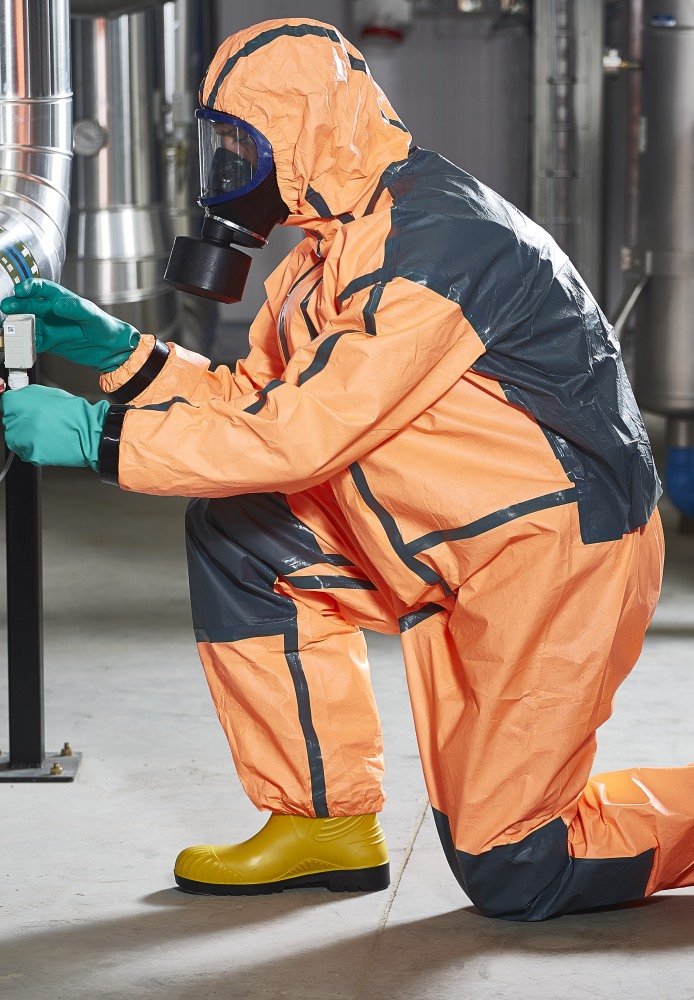
Furthermore, enhancing comfort has a range of wider benefits: better work rates and improved productivity; greater accuracy and fewer mistakes; improved moral; lower staff turnover rates and a more positive disposition to the employer. All benefits that can accrue on the bottom line. (and not to mention the reduced stress for safety managers dealing with staff complaints!)
Key Feature 7

Lakeland’s Cool Suits offer garment designs that combine protection where it is needed most, with the comfort derived from breathability.
An Established, Reputable Supplier, Offering a Service and Not Just a Product Will Pay for the Extra Cost!
The best chemical suit in the world may fail if it is not worn properly. Suitable donning of chemical protective clothing is vital to ensure it does the job it should, whilst doffing is inherently dangerous if the suit is contaminated.
Garments supplied by established, reputable manufacturers can assist not only in selection of garments, but also in provision of training workers in donning, doffing and use, as well as offering the required technical support. Low-cost garments are often sourced from manufacturers that have neither the expertise nor the will to offer the support you need.
Key Feature 8

Lakeland’s long years of experience in the design and manufacture of chemical protective clothing makes us the global experts. We offer support training, interactive study days, a range of fact sheets (available from the web site), and technical support. If you want to talk to the chemical protection experts talk to Lakeland.
CONCLUSION – What to Look for in Your Chemical Hazmat Suit
Starting with the premise that the purpose of a chemical suit is to protect against hazardous workplace chemicals, this blog has looked at eight must-have features to ensure it does the best job possible and keeps workers safe.
Here, then, is a summary of the eight key features to look for in your chemical suit: –
- Look for garments using fabric that has been tested for permeation resistance against the chemical you are using. But ensure you understand what the test means and that safe-wear times are assessed correctly!
- Look for garments that feature fully sealed seams and have an effective front fastening designed to ensure protection at the front of the garment.
- Look for garments that feature construction and design to minimize the possibility of penetration.
- Look for more secure methods of achieving sealed joins such as Lakeland’s “Push-Lock” glove connection system
- Look for garments that have been tested to a Type suitable for your application.
- Look for chemical suits with physical properties and features that match your applications needs.
- Look for garments using softer, more flexible fabrics, and designs and features to maximize comfort.
- Look for garments from manufacturers that can offer the support to ensure protection is maximized and maintained. And seek out a relationship with the manufacturer, not just the distributor.
